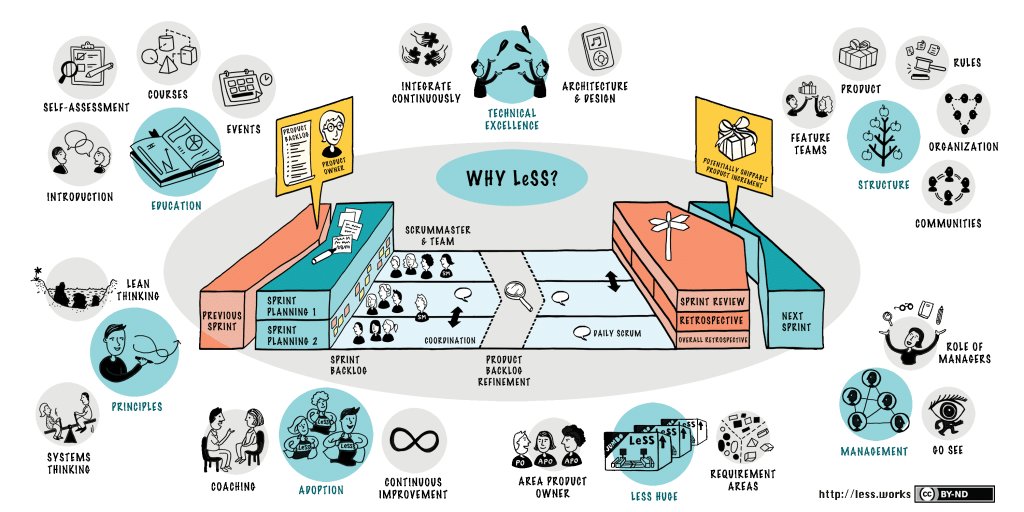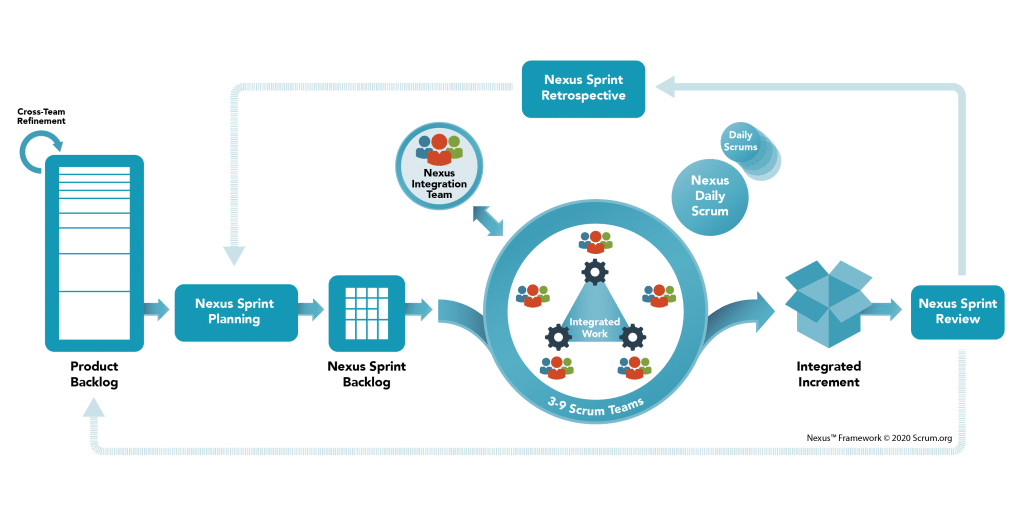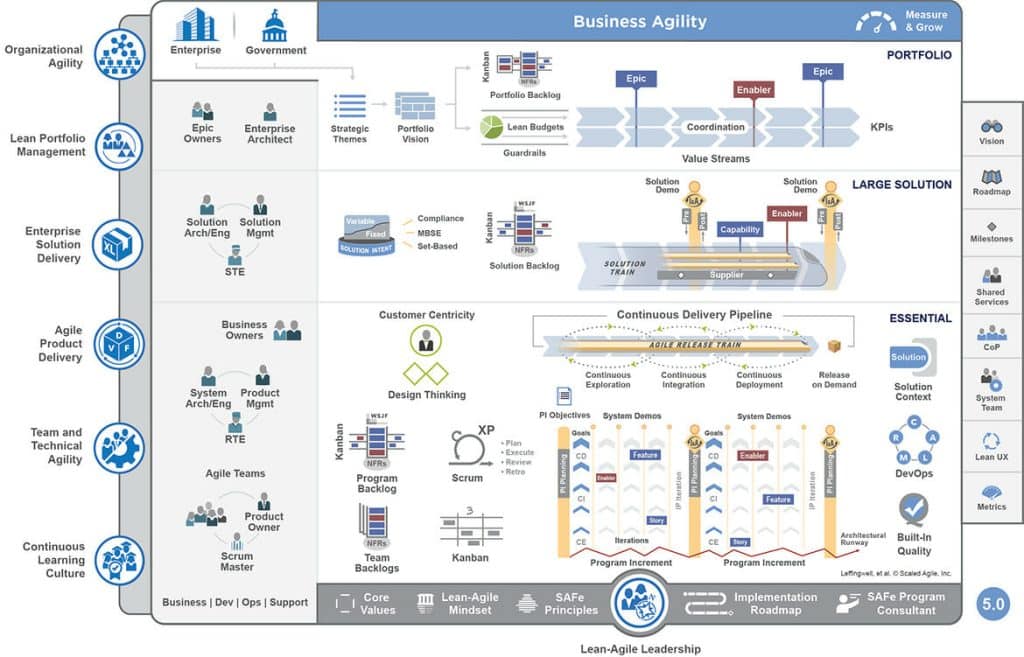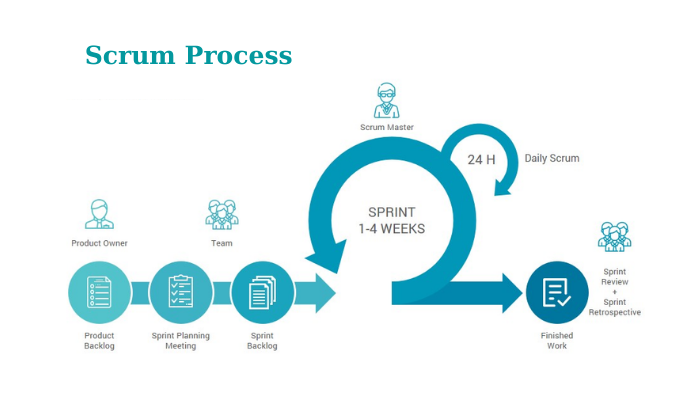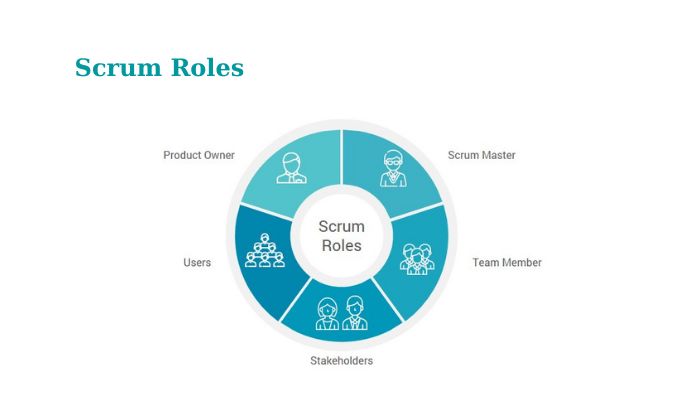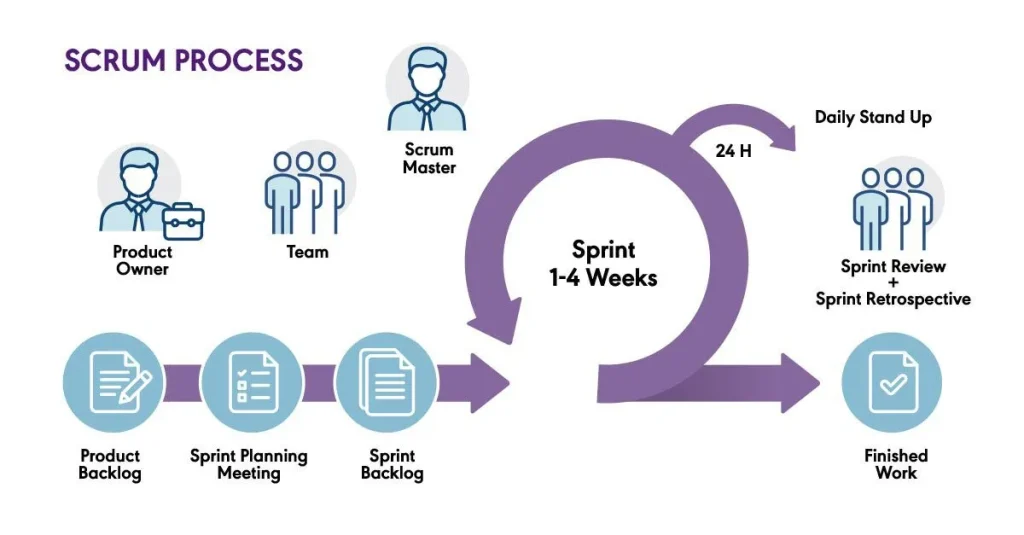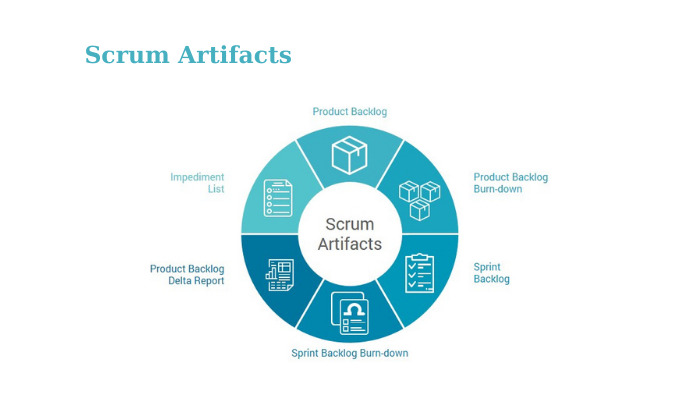What is Scrum Methodology? Roles, Event and Artifacts

In today’s fast-paced digital world, project management has become increasingly complex. To meet evolving customer demands and rapidly changing business needs, organizations require agile frameworks that promote collaboration, flexibility, and continuous improvement. Among the most popular Agile frameworks, Scrum methodology stands out as a proven approach for managing complex product development.
This article provides an in-depth guide to Scrum methodology, covering its core concepts, roles, events, and artifacts. Whether you’re new to Agile or looking to refine your understanding of Scrum, this comprehensive overview will give you everything you need to know.
What is Scrum?
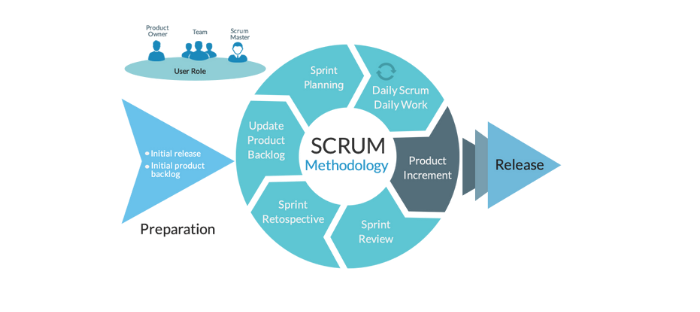
Scrum is an Agile framework used primarily for developing, delivering, and sustaining complex products. Originally designed for software development, it has now expanded into a wide range of industries including finance, marketing, education, and healthcare.
Scrum encourages iterative progress, accountability, and team collaboration. It organizes work into short, time-boxed iterations called Sprints, allowing teams to deliver functional increments of a product regularly.
Key Characteristics of Scrum
-
Lightweight and easy to understand
-
Empirical process control based on transparency, inspection, and adaptation
-
Incremental and iterative delivery of value
-
Focused on cross-functional, self-managing teams
-
Adaptable to a wide range of projects and industries
A Brief History of Scrum
Scrum was first mentioned in the Harvard Business Review (HBR) article “The New Product Development Game” by Hirotaka Takeuchi and Ikujiro Nonaka in 1986. This article explains how firms like Honda, Canon, and Fuji-Xerox use a scalable and team-based approach to product development to create new products worldwide. The importance of enabling self-organized teams is emphasized in this strategy.
The paper influenced the development of many of the concepts that later became known as Scrum. Scrum is a rugby term that describes how the game is restarted after a foul or when the ball has left the field.
By combining the concepts of the 1986 article with the concepts of object-oriented development, empirical process control, iterative development, and incremental software processes and productivity improvement, as well as the development of complex and dynamic systems, Jeff Sutherland and his team at Easel Corporation created the Scrum process to be used in software development processes in 1993.
Six Principles of Scrum Six Principles of Scrum
The Scrum framework is based on six fundamental principles and guidelines that must be adhered to throughout the entire project. Must is the keyword in this context since Scrum followers insist that every principle remains intact and attached to ensure that the team does not lose focus or cause the project to experience any failures.
These six principles include:
Control over the empirical process.
In Scrum, the method of empirical control is based on the observation of empirical evidence and experimentation instead of theory. Three main concepts are fundamental to empirically controlling processes: transparency, inspection, and adaption.
Self-organization.
Because the Scrum method relies on multiple people, self-organization is crucial. Each participant can work in a team, and self-organization helps increase participation across all parties and make it much easier for everyone to evaluate their contribution.
Collaboration.
Scrum is a collaborative procedure demonstrated by the variety of roles in the process (more about that later). The principle also focuses on three aspects essential to collaboration: understanding communication and appropriation.
Value-based prioritization.
This method involves planning and prioritizing tasks according to their importance and how they must be accomplished.
Time-boxing.
In Scrum, the tasks are accomplished within “sprints,” with specific times allocated to each. Other components, like “sprint planning” and daily meetings, also provide time-specific start and stop dates. This boxing of time ensures that all participants strictly know what time has been allotted to each stage to avoid delays and time-wasters.
Iterative development.
This last principle reflects the notion that a project might need to be refined several times throughout development. Iterative development gives the team the ability to make changes and make changes easier to manage.
Top Scrum Scaling Frameworks Explained
1. Scrum of Scrums (SoS) – Coordinating Multiple Scrum Teams Effectively
Scrum of Scrums (SoS) is one of the earliest and most widely recognized methods for scaling Scrum in organizations with multiple teams. It is designed to facilitate collaboration, coordination, and alignment across Scrum teams working on the same product or within the same project.
The core idea of Scrum of Scrums is simple: just as individual team members hold daily Scrum meetings to synchronize efforts, Scrum teams hold regular cross-team meetings to align their work, eliminate impediments, and ensure smooth integration of deliverables.
Best for: Organizations just beginning to scale Scrum with 2–9 Scrum teams.
How Scrum of Scrums Works
In a Scrum of Scrums setup, each Scrum team continues to operate independently, following the standard Scrum framework. However, to manage interdependencies and shared goals, teams appoint a representative — often the Scrum Master or a knowledgeable team member — to participate in the Scrum of Scrums meeting.
These meetings typically occur weekly, though they can be held daily if the complexity of the project or frequency of change demands it.
During these meetings, representatives:
-
Share progress updates on current sprints
-
Discuss impediments or risks that may impact other teams
-
Review dependencies between teams
-
Align on deliverables and timelines
-
Plan for upcoming work or coordinate future sprints
This structure ensures that all teams stay in sync, especially when working on tightly integrated features or overlapping releases.
When to Use Scrum of Scrums
Scrum of Scrums is most effective when:
-
Multiple Scrum teams are working on a single product or related projects
-
There are frequent inter-team dependencies
-
You need to coordinate release timelines and deliverables
-
Your organization is scaling Scrum and needs a simple and proven coordination method
2. LeSS (Large-Scale Scrum) – A Minimalist Approach to Scaling Scrum
LeSS stands for Large-Scale Scrum, and it is known for being a minimalist, lightweight, and highly adaptable framework. Rather than adding complexity, LeSS simplifies large-scale agile development by sticking closely to core Scrum principles while introducing just a few rules to coordinate multiple teams.
Instead of reinventing the wheel, LeSS aims to make things easier by establishing clear, simple guidelines that help teams align and collaborate effectively. This makes it a popular choice among organizations that prefer simplicity and clarity over rigid, prescriptive processes.
LeSS extends Scrum by adding rules and guidelines for scaling up to 2–8 teams working on the same product, with a shared Product Backlog and one Product Owner.
Best for: Organizations seeking a minimalistic, Scrum-consistent approach to scaling.
Key Principles of LeSS
-
One Product Owner manages multiple Scrum teams working on the same product.
-
One shared Product Backlog for all teams ensures unified priorities.
-
Synchronized Sprints across all teams.
-
Shared Sprint Planning, Sprint Review, and Retrospective events (with coordination layers as needed).
-
The core idea is to use as few extra roles and processes as possible, while still enabling coordination and alignment across teams.
Two LeSS Framework Variants
LeSS offers two levels of scaling, depending on the size and needs of your organization:
-
LeSS (Basic)
-
Supports up to 8 Scrum teams (usually around 50 people).
-
Teams work closely together under a single Product Owner using a common backlog.
-
-
LeSS Huge
-
Designed for very large organizations with more than 8 teams.
-
The Product Backlog is broken into Requirement Areas, each with its own Area Product Owner.
-
Enables decentralized product development while maintaining overall strategic alignment.
-
When to Use LeSS
-
You already have Scrum successfully implemented at the team level.
-
Your product is too large for one Scrum team, but you want to preserve the essence of Scrum as you scale.
-
You value flexibility, transparency, and cross-team collaboration.
-
You prefer a lean approach over heavyweight enterprise frameworks.
3. Scrum@Scale – A Flexible Framework for Scaling Agile Across the Enterprise
Scrum@Scale is a highly flexible and modular framework designed to extend the benefits of Scrum across entire organizations. Created by Jeff Sutherland, the co-creator of Scrum, Scrum@Scale addresses common pain points that organizations face when scaling agile — such as misalignment, bottlenecks, and lack of transparency.
Unlike other frameworks that can be rigid or overly prescriptive, Scrum@Scale adapts to your specific context, allowing you to scale incrementally based on your organizational needs. It can stand alone as a full scaling solution or be integrated with other frameworks like SAFe or LeSS.
Best for: Large enterprises that need a modular, decentralized scaling solution.
What Makes Scrum@Scale Unique?
Scrum@Scale is built on the idea of creating a “scale-free” architecture, where small, cross-functional Scrum teams connect through two key parallel cycles that work together to drive agility across the organization:
The Two Core Cycles of Scrum@Scale
1. The Product Owner Cycle
Focuses on strategic alignment and delivery of customer value. This cycle includes:
- Defining and communicating the organizational vision
- Managing and prioritizing Product Backlogs
- Coordinating release planning and delivery
- Reviewing releases to ensure business outcomes
2. The Scrum Master Cycle
Focuses on team performance, coordination, and continuous improvement. This cycle includes:
- Facilitating Scrum of Scrums (SoS) for team alignment
- Identifying and removing organizational impediments
- Fostering a culture of Kaizen (continuous improvement)
- Supporting consistent delivery of working product increments
These two cycles are interconnected and interdependent, ensuring that strategic priorities (Product Owner Cycle) and operational excellence (Scrum Master Cycle) evolve together.
When to Use Scrum@Scale
Scrum@Scale is ideal for:
- Enterprises with multiple Scrum teams needing coordination
- Organizations that want flexibility over strict hierarchy
- Businesses aiming to scale agility across departments, not just development
- Companies looking to align strategy with execution in a scalable way
4. Nexus Framework – A Lightweight Solution for Scaling Scrum in Large Organizations
Nexus is a lightweight scaling framework built to help large organizations coordinate multiple Scrum teams working together on a single product. Developed by Ken Schwaber, co-creator of Scrum, Nexus maintains the core principles of Scrum while providing additional structure to manage the complexity that arises when scaling.
Nexus is specifically designed to address two major challenges in large-scale agile environments: transparency and accountability. These are often diluted as more teams become involved, but Nexus reinforces them through structured roles, events, and artifacts.
What Makes Nexus Different?
What sets Nexus apart from other Scrum scaling frameworks is its emphasis on integration and coordination. It introduces new roles and artifacts to support collaboration across teams and streamline delivery.
1. Nexus Integration Team (NIT)
The Nexus Integration Team is a key component of the framework. It is responsible for ensuring that all Scrum teams work toward a unified, integrated product. The NIT includes representatives (often Scrum Masters, developers, or technical leads) from each Scrum team and may include a dedicated Integration Scrum Master.
The responsibilities of the NIT include:
-
Overseeing the integration of all team outputs into a single product increment
-
Identifying and managing cross-team dependencies
-
Ensuring that all deliverables meet the Definition of Done
-
Resolving integration conflicts
2. Nexus Sprint Backlog
The Nexus Sprint Backlog is another distinctive artifact. It’s an aggregated view of the Sprint Backlogs from all participating teams, providing visibility into shared goals and cross-team tasks. This shared backlog:
-
Enhances transparency
-
Supports coordinated planning
-
Helps identify integration risks early in the sprint
-
Encourages collaboration to address dependencies
How Nexus Works
Nexus works by extending the standard Scrum framework with minimal additional complexity. All Scrum events (Sprint Planning, Daily Scrum, Sprint Review, and Sprint Retrospective) are adapted to include cross-team coordination, while individual Scrum teams continue to hold their own ceremonies as needed.
The Nexus Integration Team facilitates the Nexus Daily Scrum and Nexus Sprint Planning, which focus on integration challenges and alignment across teams.
When to Use Nexus
Nexus is a strong choice when:
-
You have multiple Scrum teams (3–9) working on the same product
-
Integration and dependency management have become significant challenges
-
You want to scale Scrum without deviating too far from its core structure
-
Your organization values transparency and shared accountability
4. SAFe (Scaled Agile Framework)
SAFe is a comprehensive framework for scaling Agile across the entire enterprise, not just development teams. It incorporates Scrum, Lean, and DevOps principles and adds detailed layers for strategy, governance, and portfolio management.
Best for: Large, complex enterprises with regulatory requirements, multiple departments, and formal planning cycles.
Key Characteristics:
-
Multiple configurations (Essential SAFe, Large Solution SAFe, Portfolio SAFe, Full SAFe)
-
Roles like Release Train Engineer, Solution Architect
-
Program Increments (PIs) and Agile Release Trains (ARTs)
How the Scrum Process Works
The Scrum process is designed to help teams deliver value incrementally while adapting quickly to changes. It consists of clearly defined roles, events, and artifacts that work together to create an efficient workflow.
1. Product Backlog Creation and Prioritization
Everything starts with the Product Backlog, a prioritized list of features, enhancements, bug fixes, and tasks that make up the project. The Product Owner owns the backlog and ensures it is well-organized, detailed, and prioritized based on business value and customer needs. This backlog is dynamic and evolves as new requirements emerge.
2. Sprint Planning
At the beginning of each Sprint, the team participates in a Sprint Planning meeting. During this meeting, the Product Owner presents the highest-priority items from the Product Backlog. The development team collaboratively selects which items they can realistically complete during the upcoming Sprint, based on their capacity and complexity.
This results in the creation of the Sprint Backlog — a set of user stories or tasks that the team commits to delivering within the Sprint.
3. Sprint Execution
A Sprint is a fixed time-box, typically lasting 2 to 4 weeks, during which the development team works on the Sprint Backlog items. The goal is to produce a potentially shippable product increment by the end of the Sprint.
Daily, the team holds a Daily Scrum (or Daily Stand-up) meeting, usually lasting 15 minutes. During this event, each team member shares:
-
What they completed since the last meeting
-
What they plan to do next
-
Any blockers or obstacles they are facing
This daily synchronization helps maintain transparency, promote accountability, and quickly resolve issues that could slow down progress.
4. Sprint Review
At the end of the Sprint, the team holds a Sprint Review meeting with stakeholders. The purpose is to demonstrate the work completed and gather feedback. The Product Owner may adjust the Product Backlog based on this feedback, ensuring the team is always aligned with customer needs and business priorities.
5. Sprint Retrospective
After the Sprint Review, the team conducts a Sprint Retrospective. This internal meeting focuses on process improvement. The team reflects on what went well, what didn’t, and how to improve in the next Sprint. It is a critical practice to foster continuous improvement and team growth.
6. Repeat
The Scrum process repeats every Sprint, creating a continuous cycle of planning, execution, review, and improvement. This iterative approach allows teams to respond quickly to change, deliver value regularly, and maintain high product quality.
Read more: Top 10 Best Scrum Software for 2022
Scrum Team and Roles
The Scrum team focuses on producing high-quality software. The Scrum project owner identifies what characteristics the product must construct (what to build, what not to build, and in what order) and overcomes any obstacles that may obstruct the development team’s task.
1. How do Scrum teams work?
The Scrum Team is usually composed of “ten or less.” However, the size of the team is determined by the particular project being considered. The purpose that is the goal of the Scrum framework is to bring benefits to the customer by following a structure for rapid delivery and iterative planning.
To allow Scrum to be successful, it must have an effective communication system, accountability, and collaboration among team members. There are many other features of high-performing Scrum teams.
- Transparency: Product owners need to be precise and clear in presenting the backlog of their product and stakeholder/customer priority. The development team should be clear about obstacles and obstructions to be addressed promptly.
- Accountability: Members of the Scrum team are accountable to each other and the accomplishment of the sprint’s final goal.
- Self-organized: Every person on the team must understand their role and responsibilities. They should also be involved in solving problems.
2. Roles in Scrum Team
The Scrum team is comprised of the roles below:
a. Product Owner
The product owner acts as a mini-CEO. Imagine them as an executive, a liaison to the stakeholder, and an advocate for the client’s needs. The duties of the product owner are:
- Determining the sprint’s goal: Product owners prioritize the backlog based on the product’s roadmap. With the assistance of the Scrum team, the product owner decides the objectives and the priorities for the following sprint.
- Managing the product backlog: The product backlog comprises features tasks, user stories, and deliverables. The owner of the product’s duty is to ensure that the backlog is updated regularly.
- Create a vision for your product: Product Owner is also the person who owns the product’s vision. The product’s vision is a document that describes the ideal customer, the product’s performance, its mission, its primary goal, and the value it will bring to users.
b. Scrum master
Sometimes, Scrum Master are viewed as facilitators of the team. Typically, the Scrum master is a critical leadership position of servanthood inside the Scrum team. The responsibilities of the Scrum master include:
- Participating in Agile Scrum principles: The Scrum Master is responsible for upholding and educating team members about Agile Scrum principles and enforcing the application. They maintain the product owners and development teams on the Agile course as they need to. Scrum masters are responsible for ensuring that the team is agile. Scrum master also coordinates Scrum activities like those of the daily stand-up meetings. They often determine the time, place, participants, and other essential factors for a successful meeting.
- Coach: The Scrum Master is an example to members of the Scrum team, ensuring that they’re focusing on the sprint’s goals and effectively working with the other participants in the group.
- Removal of roadblocks and distractions: When external influences begin to impact the team’s outputs, It is the responsibility of the Scrum supervisor to ensure these obstacles are eliminated.
- Mediating: In some cases, the development team and the product owner disagree. The Scrum master will often be able to in resolving these disputes.
c. Development team
In contrast to the other roles, The development team doesn’t comprise just a person but a team of people. They’re the technical portion of the Scrum team. They have a strong background in their particular area of expertise and maybe UX designers, Front-end designers, Quality testers, etc. The type of project will define the roles required for teams of developers, and therefore there’s no template for it. The traits of a development team include:
- Experts: The development team requires experienced experts or those who know how to meet the project’s technical requirements.
- Account: The development team is accountable for any mishap or delivery, or an error in the final product. Because they are the technical team, any issue that might result from the delivery of the product in itself is a matter for team members responsible for development.
- Self-organizing: Like the other members of the Scrum team, the development team is self-organizing. This means they have a say in their respective assignments and take an active role in solving problems. Every member of the development team must be able to plan their projects and complete their everyday task on the software, participate in meetings and adhere to deadlines.
- Cross-functional: The development team consists of individuals with different expertise required to accomplish the objectives of the product.
Scrum Events: Framework for Collaboration
Scrum defines five events that provide structure to each Sprint and enable regular feedback and improvement.
1. The Sprint
A Sprint is the heart of Scrum. It’s a fixed-length event (usually 1 to 4 weeks) during which a usable, valuable product increment is created. All other events happen within the Sprint.
Key aspects:
-
Consistent length for each Sprint
-
No changes that would endanger the Sprint Goal
-
Scope may be clarified and renegotiated with the Product Owner
2. Sprint Planning
Sprint Planning is the kickoff meeting at the beginning of the Sprint. The Scrum Team decides what can be delivered in the Sprint and how the work will be achieved.
Key Questions Answered:
-
What work can we commit to this Sprint?
-
How will we do the work?
Inputs:
-
Product Backlog
-
Latest product increment
-
Team’s capacity
3. Daily Scrum
The Daily Scrum is a 15-minute stand-up meeting held each day of the Sprint. It’s an opportunity for Developers to synchronize activities and plan for the next 24 hours.
Typical Questions:
-
What did I do yesterday?
-
What will I do today?
-
Are there any impediments?
This event promotes transparency, team alignment, and early detection of issues.
4. Sprint Review
Held at the end of the Sprint, the Sprint Review is an informal meeting to inspect the increment and gather feedback.
Participants:
-
Scrum Team
-
Stakeholders
Goals:
-
Demonstrate completed work
-
Gather feedback for future development
-
Adapt the Product Backlog if needed
5. Sprint Retrospective
The Sprint Retrospective is the final event of the Sprint. It’s dedicated to continuous improvement.
Purpose:
-
Reflect on the past Sprint
-
Identify successes and areas for improvement
-
Create actionable plans for improving team performance
Scrum Artifacts: Tools for Transparency
Scrum artifacts provide critical information that gives transparency and opportunities for inspection and adaptation.
1. Product Backlog
The Product Backlog is an ordered list of all features, fixes, enhancements, and tasks that might be needed in the product. It is a living document, constantly refined by the Product Owner. The product owner creates it, and functions are prioritized depending on what is more or less crucial for the company. The objective is for the product’s owner to be able to respond, “What is the best way to do this”.
Characteristics:
-
Prioritized by business value
-
Clear and concise items
-
Continuously evolving
2. Sprint Backlog
The Sprint Backlog is a subset of the Product Backlog. It includes items selected for the Sprint, along with a plan for delivering them. The team decides on the length of each sprint. The sprint backlog is shown on physical boards, referred to as Scrum boards. This allows the development process to be visible to all who enter the development zone.
Contents:
-
Sprint Goal
-
Selected Product Backlog items
-
Task breakdown and implementation plan
The Sprint Backlog is owned and managed by the Developers.
3. Increment
The Increment is the sum of all Product Backlog items completed during a Sprint, combined with the value of previous Increments. It must be usable and meet the Definition of Done. It will be available to the end-user via software.
Key Requirement: Each Increment must be in a releasable state, even if it’s not released.
Scrum Values: Foundation of Team Behavior
Scrum is not just about roles and events. It is underpinned by five essential values:
-
Commitment – The team commits to achieving goals and supporting one another.
-
Courage – Members take bold steps to face challenges.
-
Focus – Everyone focuses on the work and the Sprint Goal.
-
Openness – Team members and stakeholders are transparent about progress and challenges.
-
Respect – Individuals are respected and valued for their contributions.
These values create a strong team culture that supports the success of Scrum implementation.
Benefits of Using Scrum
Organizations that adopt Scrum report significant improvements in productivity, quality, and customer satisfaction.
Key Benefits Include:
-
Faster Time-to-Market through incremental delivery
-
Improved Team Collaboration with clear roles and regular communication
-
Higher Customer Satisfaction via frequent feedback
-
Increased Transparency and Visibility into the process
-
Continuous Improvement through retrospectives and iterative planning
When to Use Scrum Methodology
Scrum is particularly effective in environments characterized by:
-
Rapidly changing requirements
-
Complex product development
-
High need for customer collaboration
-
Cross-functional team structures
However, it may not be the best choice for:
-
Projects with fixed and unchanging requirements
-
Highly regulated environments with strict process adherence
-
Teams unfamiliar or resistant to Agile principles
Common Misconceptions About Scrum
-
Scrum is only for software development.
In reality, Scrum is industry-agnostic and has been successfully applied in education, manufacturing, marketing, and more. -
The Scrum Master is a project manager.
Scrum Masters do not assign tasks or manage people; they facilitate and enable team success. -
Scrum is just a process.
Scrum is a mindset and framework. It’s about collaboration, learning, and delivering value.
Final Thoughts
Scrum is more than just a set of ceremonies—it’s a powerful framework that enables teams to deliver high-value products with speed and flexibility. By understanding the Scrum roles, events, artifacts, and values, organizations can unlock higher productivity, transparency, and customer alignment.
If you’re considering adopting Agile or looking to enhance your current Scrum practices, mastering these fundamental components will set your team on a path toward sustained success.
Frequently Asked Questions (FAQs)
Q: Is Scrum the same as Agile?
A: Scrum is a framework that follows Agile principles. Agile is the philosophy; Scrum is one way to implement it.
Q: How long is a typical Sprint?
A: Sprints typically last between 1 to 4 weeks. The most common duration is 2 weeks.
Q: Can Scrum work with remote teams?
A: Yes, with the right tools and communication practices, Scrum can be highly effective for remote or distributed teams.
Q: What’s the difference between Product Backlog and Sprint Backlog?
A: The Product Backlog contains all potential work for the product, while the Sprint Backlog includes only the tasks selected for the current Sprint.
If you are now aware of the Scrum methodology and how it could assist you, are you keen to apply it to your organization? Contact us, and we’ll assist you in turning your current system into a more effective one.



